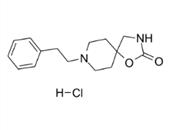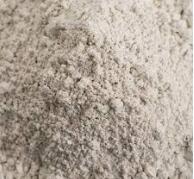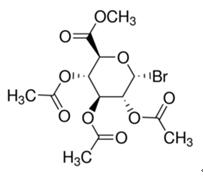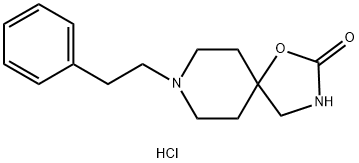Medicinal Effect of Fenspiride Hydrochloride
Dec 11,2019

Fenspiride hydrochloride {8-(2-phenylethyl)-1-oxa-3,8-diazaspiro[4,5]decan-2-one. HCl} with the CAS registry number 5053-08-7 is a whitish water-soluble microcrystalline solid. It is marketed in European countries in tablet, syrup or injectable solution for adults and children from the age of 2 years use. In the European, fenspiride medicines have been authorized via national procedures in Bulgaria, France, Latvia, Lithuania, Poland, Portugal and Romania and are available under various brand names (Elofen, Epistat, Eurefin, Eurespal, Fenspogal, Fosidal, Kudorp, Pneumorel, Pulneo, Еуреспал and Сиресп)1.
Fenspiride hydrochloride is an α adrenergic and H1 histamine receptor antagonist. Fenspiride hydrochloride is a bronchodilator with anti-inflammatory properties. Fenspiride hydrochloride inhibits mucus secretion and reduces the release of tachykinins at a prejunctional level.
Fenspiride hydrochloride is a nonsteroidal compound with a number of modes of action and end-organ effects. It has been shown to be anti-inflammatory2, antiallergic, and antioxidant. It is an effective drug in case of acute and chronic inflammatory diseases of otolaryngological system and respiratory tracts. It is also used as a complex therapy for bronchial asthma, allergic rhinitis, and other symptoms of allergy within otolaryngological system and respiratory tracts, respiratory manifestations of measles, flu, and symptomatic therapy of whooping cough.
Fenspiride hydrochloride could be synthesized from phenethyl-4-hydroxy-4-aminomethylpiperidine, which was prepared according to the British Patent No. 1100281, from piperidone via cyanohydrin and subsequent reduction3. The synthesis of Fenspiride hydrochloride (US4028351) could also use N-substituted-4-piperidone as starting material, which was reacted in an appropriate solvent or solvent mixture with an alpha halogen ester in the presence of activated zinc4. Another alternative method of fenspiride hydrochloride preparation could start with N-(2-phenylethyl)-4-piperidone which was treated with trimethylsilylcyanide in the presence of ZnI25. The commercial manufacturing of fenspiride hydrochloride could start with N-(2-phenylethyl)-4-piperidone by Corey-Chaykovsky epoxide formation6. Another efficient, short manufacturing process for fenspiride hydrochloride has been reported by using Nitro-aldol condensation as the key reaction in the developed process with very good yield7.
The Pharmacovigilance Risk Assessment Committee (PRAC) is recommending that the marketing authorisation applications (MAAs) for fenspiride be withdrawn in the European due to the risk of sudden, serious heart rhythm problems according to a review of fenspiride, which was initiated on 14 February 2019 at the request of France8.
References
1.Dumasia, M. C.; Houghton, E.; Hyde, W.; Greulich, D.; Nelson, T.; Peterson, J., Detection of fenspiride and identification of in vivo metabolites in horse body fluids by capillary gas chromatography-mass spectrometry: administration, biotransformation and urinary excretion after a single oral dose. Journal of Chromatography B-Analytical Technologies in the Biomedical and Life Sciences 2002, 767 (1), 131-144.
2.Khawaja, A. M.; Liu, Y. C.; Rogers, D. F., Effect of fenspiride, a non-steroidal antiinflammatory agent, on neurogenic mucus secretion in ferret trachea in vitro. Pulmonary pharmacology & therapeutics 1999, 12 (6), 363-8.
3.Duhault, J.; Lonchampt, M.; Regnier, G.; Guillonneau, C., Spiro (4,5) decanes. US 4824836 1989.
4.Taccone, I., Method for the preparation of derivatives of spiro (4, 5)-decanes and derivatives thus obtained. US 4028351 1977.
- Related articles
- Related Qustion
- What is Fenspiride hydrochloride? Feb 24, 2020
Fenspiride hydrochloride is an oxazolidinone spiro compound with a molecular formula of C15H20N2O2. HCl, which is a non-steroidal compound with a number of modes of action and end-organ effects.
Bentonite is an absorbent aluminium phyllosilicate clay consisting mostly of montmorillonite. The term Bentonite was first used for a clay found in about 1890 in upper cretaceous tuff near Fort Benton, Wyoming.....
Dec 11,2019Inorganic chemistryThe IUPAC name of acetobromo-α-D-glucuronic acid methyl ester (C13H17BrO9) is methyl (2S,3S,4S,5R,6R)-3,4,5-triacetyloxy-6-bromooxane-2-carboxylate, with the CAS registry number 21085-72-3.....
Dec 11,2019SaccharidesFenspiride hydrochloride
5053-08-7You may like
Fenspiride hydrochloride manufacturers
- Fenspiride hydrochloride
-

- $1.00 / 1g
- 2021-08-18
- CAS:5053-08-7
- Min. Order: 1g
- Purity: 99%
- Supply Ability: 10tons
- fenspiride hydrochloride
-

- $100.00 / 1KG
- 2021-05-21
- CAS:5053-08-7
- Min. Order: 1ASSAYS
- Purity: 99%
- Supply Ability: 1000t
- Fenspiride hydrochloride
-

- $50.00 / 1KG
- 2020-09-03
- CAS:5053-08-7
- Min. Order: 1KG
- Purity: 99.9%
- Supply Ability: 10tons






